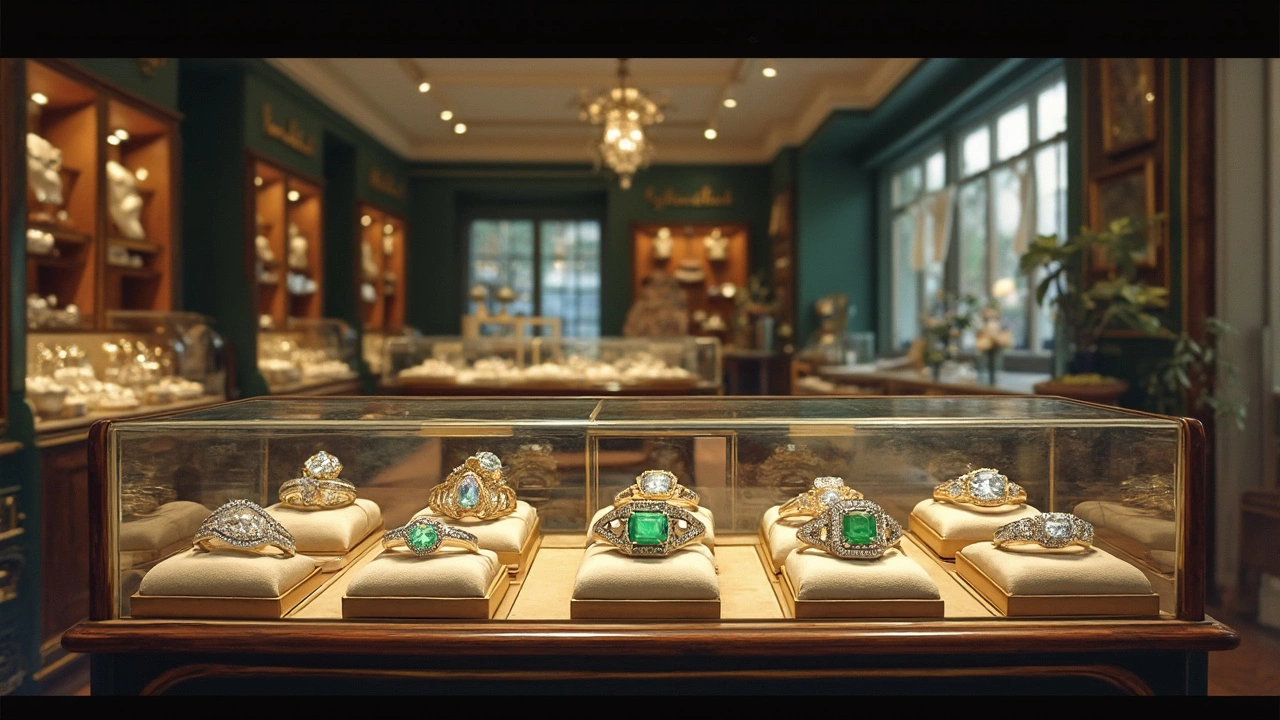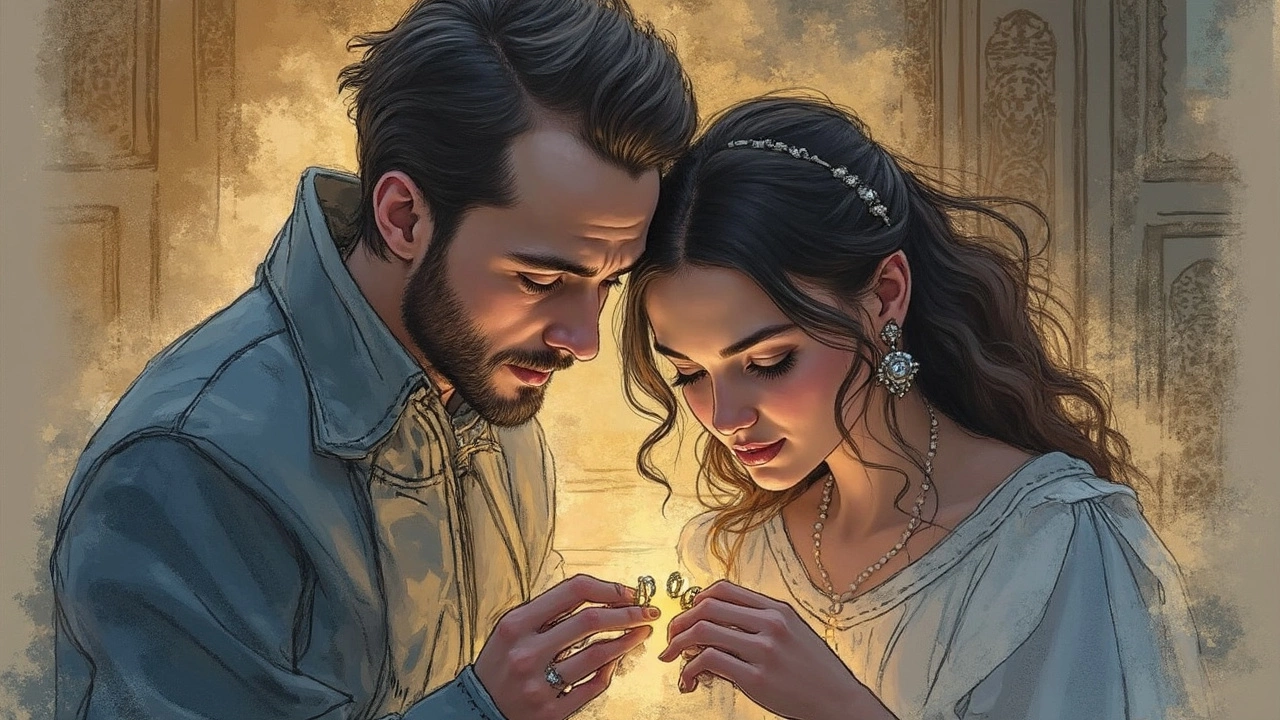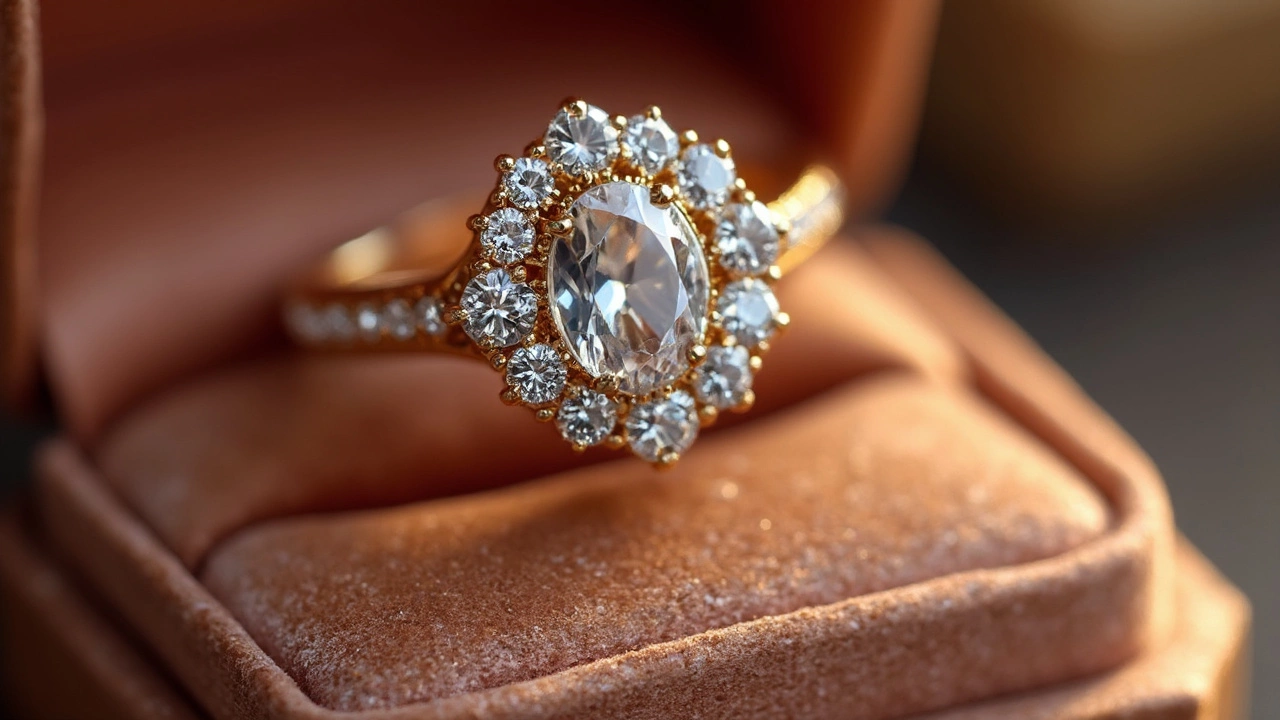Thinking about buying a $10,000 wedding ring? You're probably wondering just how big and extravagant that ring might be. Spoiler: it's not just about size. Sure, a bigger price usually means a bigger or flashier ring, but there's so much more to it.
First off, let’s talk metal. At this price point, you'll often find rings made of high-quality metals like platinum or 18k gold. These aren't just durable; they also give your ring that luxurious feel. But remember, the metal is just part of the story.
Now, onto gemstones. Many assume a chunk of change like $10,000 automatically means a massive diamond. While you can get a decent size, the cut, clarity, and overall quality might have a bigger impact on the price than just carat weight. A well-cut diamond that's smaller can outshine a larger, flawed one any day.
- Understanding the Price Tag
- Metal Choices and Their Impact
- Gemstone Size vs. Price
- Customization Options
- Smart Buying Tips
Understanding the Price Tag
When you’re shelling out $10,000 for a wedding ring, you’re buying more than just a piece of jewelry. There’s a whole world of factors influencing that price, which might not even include what you expect—like sheer size. So, what’s really in that five-digit number?
Breaking Down the Costs
First off, you're looking at materials. Top-end metals like platinum or 18k gold are popular picks. They’re not just resistance kings, but they also up the elegance game. In the case of platinum, it's especially dense and hypoallergenic, making it a top choice for many couples.
Next, diamonds or gemstones. If you’re opting for a diamond, its price is heavily influenced by the 4 Cs: cut, color, clarity, and carat. It’s not just about size; a perfectly cut, smaller stone can cost way more than a bigger, dull one.
If you think the price of your ring only represents size, think again. "It’s the true craftsmanship and choice of materials that fundamentally sets the real value," says Sarah Watson, a renowned gemologist from Dublin’s Goldsmith Guild.
Hidden Factors You Might Overlook
Customization can play a big role too. Engraving, bespoke designs, or adding unique details can add cost. If your heart is set on something specific, like a vintage-inspired design or certain personalization, that will jump the price beyond just stones and metal.
Then there’s the brand. High-end designer rings can carry a significant markup. You're paying for the brand legacy, their unique designs, and often, exclusive warranties or services.
Is Bigger Always Better?
Let's look at it this way: opting for a top-of-the-line 1-carat diamond with exceptional cut and clarity could eat your entire budget, while going for a slightly larger diamond with lower grades might fit the same budget. So, it’s all about what matters to you—is it the glitter and glam, or subtle elegance?
Here's a quick look at how some typical costs break down in a $10,000 ring:
| Component | Typical Cost |
|---|---|
| Metal (18k Gold or Platinum) | $1,200 - $3,000 |
| Main Diamond (1 Carat High Quality) | $6,000 - $7,000 |
| Customization & Design | $500 - $1,000 |
| Brand and Retailer Markups | $1,000 - $2,000 |
All these factors combine to shape how your budget plays out. So even within the same price range, the options are vast. Take time to weigh what's most important for your forever ring.
Metal Choices and Their Impact
When you're investing in a $10,000 ring, picking the right metal can make all the difference. Not only does it affect the look and feel, but it also influences the ring's longevity and value. So, let's break down your top options.
Platinum: The Premium Pick
Platinum is often touted as the go-to for high-end rings. It's incredibly durable, which means it's less likely to scratch or tarnish over time. Plus, platinum's naturally white sheen enhances the sparkle of your diamonds or other gemstones. The downside? It's usually pricier than gold, but with that $10,000 budget, it’s definitely a feasible option.
Gold: Classic and Versatile
Gold, especially 18k gold, is another popular choice. It's softer than platinum, so it might show wear more easily, but it's available in various colors—yellow, white, and rose—giving you lots of creative freedom. Plus, 18k means it's 75% pure, balancing durability with a rich look.
Palladium: The Underdog
Recently, palladium has become a contender in the wedding ring market. It's similar to platinum but typically less expensive, making it a smart choice for those who want durability without the platinum price tag.
| Metal | Durability | Color Options |
|---|---|---|
| Platinum | High | White |
| 18k Gold | Moderate | Yellow, White, Rose |
| Palladium | High | White |
Ultimately, the metal you choose for that $10,000 ring will depend on your priorities: do you want the absolute best in durability, a classic and versatile look, or perhaps the best bang for your buck? Weighing these factors will help you make the best decision for your forever ring.

Gemstone Size vs. Price
When browsing for a $10,000 ring, it's easy to get caught up in the idea that bigger is always better. But that's not entirely true, especially with gemstones. The price of a gemstone isn't just about how big it is; other factors come into play.
Quality vs. Quantity
The first thing to understand is that gemstone quality, particularly for diamonds, can affect the price as much, if not more, than size. The famous '4 Cs'—carat, cut, color, and clarity—are terms you'll hear a lot. While carat directly relates to size, the cut is all about how well the stone interacts with light, color measures its brightness, and clarity looks at internal flaws. A smaller diamond with a better cut and fewer inclusions might cost more than a larger, imperfect one.
Alternatives to Diamonds
Some folks are opting for alternative gemstones that offer size and distinctiveness without requiring the hefty diamond price tag. Sapphires, emeralds, and rubies can make a ring stand out and fit nicely into your wedding ring budget. Each has unique characteristics and beauty that don’t always correlate with size, but definitely with visual appeal and durability.
Evaluating Price
Thinking of diving deeper into specifics? Let’s check out a quick comparison:
| Carat | Diamond (Round - Ideal Cut) | Sapphire (Round) |
|---|---|---|
| 1.0 | $8,000 | $2,000 |
| 1.5 | $15,000 (already over budget) | $5,500 |
| 2.0 | N/A (too high) | $10,000 |
This table shows that size isn’t always the deciding factor. A smaller diamond might be in reach, but a larger sapphire could be more affordable and equally stunning.
So, as you ponder that engagement ring, remember: it’s not just the bling that matters. A smaller, dazzling gemstone with top-notch quality can not only fit in your budget but also stand out for years to come.
Customization Options
When you're putting a solid $10,000 into a wedding ring, you want it to be just right, don’t you? That's where customization comes in, giving you the scope to tailor every detail according to your or your partner's taste.
Choice of Metals
First on the menu is the metal choice. Whether you're going for classic gold, sleek platinum, or something innovative like rose gold, each metal can really influence the overall look and feel of the ring. Some folks even go for a mix of two metals for a distinctive bi-metal or tri-metal style.
Unique Gemstone Settings
Next up: settings. The way stones are set can drastically change a ring’s appearance. You can opt for a simple solitaire setting to highlight the main stone or a halo setting for extra sparkle. For those who like a bit of eye-catching symmetry, try a three-stone or side-stone setting.
Engravings and Personal Touch
Engravings offer a personal touch that’s truly unique. You can engrave a meaningful date, name, or even a short phrase inside the ring band. It’s a little hidden secret that makes the ring all the more personal.
Mixing Gemstones
Last but definitely not least, consider playing around with different gemstones. Diamonds may be classic, but adding sapphires, emeralds, or other birthstones can add a personal touch and bring some color contrast into your wedding ring.
Customizing your ring isn't just about picking random styles—it's about creating something that feels like you while staying true to your budget. With so many options, you can mix and match features to your heart's content, ensuring the ring of your dreams without breaking the bank.

Smart Buying Tips
So, you've set your heart on a $10,000 wedding ring. That's a significant investment, and you want to make the smartest choices possible. Here's how to get the best bang for your buck.
Do Your Homework
Before you even step foot in a jewelry store, make sure to do a bit of research. Understanding key terms like the 4 C's of diamonds—cut, clarity, color, and carat—can really empower you when discussing options with jewelers.
Set Your Priorities
What matters most to you: size, sparkle, or clarity? Prioritize what aspects are non-negotiable and where you're comfortable with a compromise. This focus helps narrow down choices, reducing overwhelm and keeping you on track.
Don't Shy Away From Alternatives
Diamonds may be traditional, but they aren't your only option. Stones like sapphires and emeralds offer stunning alternatives and often come with a lower price tag, allowing you to get a more significant stone for your money.
Keep an Eye on Seasonal Deals
Believe it or not, timing does make a difference. Check for deals around major holidays or during wedding season. Some retailers offer discounts or incentives like free upgrades or warranties around these times.
Read the Fine Print
Sounds boring, right? But warranties and return policies matter. They can save you future headaches if something needs tweaking or if a stone comes loose. Make sure you're clear on what these policies entail before making your purchase.
| Aspect | Priority |
|---|---|
| Diamond Size | Adjustable |
| Metal Quality | High Priority |
| Stone Alternatives | Considerable |
In short, a little preparation goes a long way when buying a wedding ring. Be informed, stick to what's important to you, and keep an open mind. You’ll come away with a ring that doesn’t just look great—it feels right, too.
